Brief history of carbonated beverages: Happy Summer Summer today, you have to go to the pharmacy to drink
Author:Hubei Library Time:2022.07.31
People try their best to make carbon dioxide in the water. At first, it was not to drink happiness.
This article is about 6000 words
Reading requires 18min
When soda first entered China, it was called Dutch water. At least in 1887, it appeared on the streets of Shanghai. The drinks were pale green and sold in the tile pot with a lid. During the Republic of China, the most popular place for young people was the ice room. The newspaper uses photos of drinking soda to reflect people's leisure life, saying that "the rich people sit in the tea room all day, soda, Coca -Cola, and fresh orange juice, but it is a wonderful product." In the 1920s and 1930s, foreign -funded brands were selling for about one yuan. Domestic brands could only be sold for seven or eight anise, and soda on the roadside stalls may only need to be three or four corners. Chinese people with strong hands -on capabilities in their diet not only are willing to buy finished soda, but also start to think about how to make their own homemade.
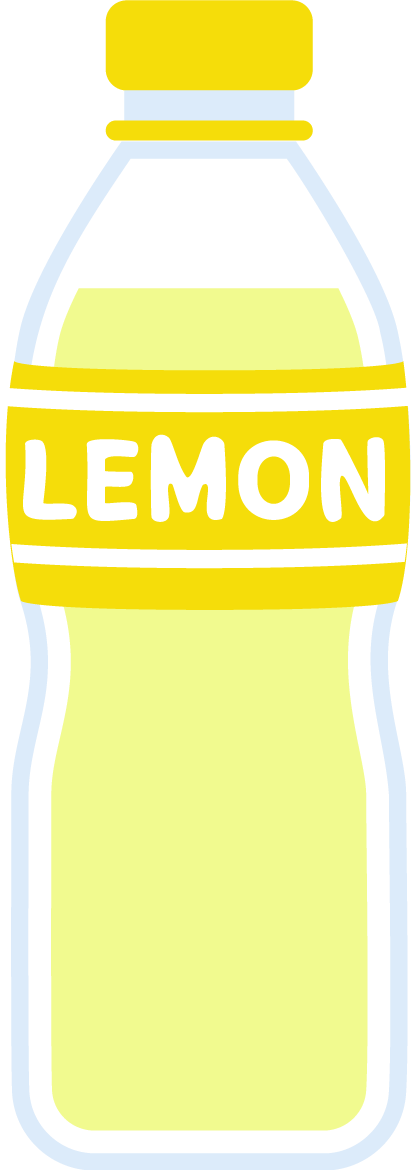
Bubble water was a leader in the summer beverage market early. The moment when the bottle cap was opened, we heard the sound of nourishing bubbling. We seem to have the power to resist the heat and heat. In childhood memories, the three -piece set of "soda, watermelon, cold seat" seems to be more summer than air conditioners. In fact, the relief effect of soda is more than one illusion. After drinking carbonated beverages, carbonate will be decomposed into carbon dioxide and water due to increased temperature and decrease in pressure. Because the reaction is the heat absorption reaction, it is accompanied by some calories with the excretion of carbon dioxide from the body, which will then play a cool and cooling role. However, hundreds of years ago, people tried their best to inject carbon dioxide into the original intention of the water. It was not to drink happiness, but to develop drugs. The invention of carbonated beverages was inadvertently inserted.
Artificial bubble water is difficult to birth
In Europe with a lot of live volcanoes, many spring water is naturally gas. In Western history, the gas -containing natural mineral water has always been regarded as a treasure. People believe that it has magic and cure all diseases. In the 1960s, some people recorded the "fairy water" origin of Bask Bath. A large number of hot spring baths are opened around these mineral springs, which has become a good place for rich people to leisure and health care. At first, the businessmen also wanted to soak these natural gas to sell them on the market and earn a lot of money. I never thought of the opening of the market. One layer of sediment.
Bubble mineral water was removed for bathing, and later was gradually placed on the table because everyone found that the water with bubbles seemed to be particularly cool and thirsty. It was guessing that bubble water must be beneficial to human health.
Since you can't do it in the porter of nature, you might as well find a way to imitate nature. How to make bubble water? Many people have studied this issue in history. It is generally believed that the British William BrownRigg (1712-1800) is the first person to create a "soda" to the water. He used the gas collection of gas gases (such as methane) in the mine and air research after the depletion of oxygen consumption to analyze the gas components in the coal mine. Of course, this "soda" cannot be drunk.
In the 1870s, British chemist Joseph Priesstley became interested in the gas on the beer fermentation barrel. He put a bowl of water on the beer fermentation barrel to study the role of "fixed air" and water. As a result, he found that the water in the bowl had a pleasant sour taste. Priestri believes that this must be "fixed air" dissolved in water. The "fixed air" mentioned here was later proven to be carbon dioxide.
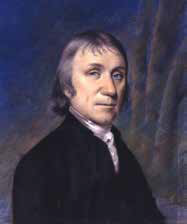
British chemist Joseph Princeli (1733-1804). He first confirmed that the air was not a gas, but was composed of different components. Therefore, it was called the "father of gas chemistry". At the same time, he was also the inventor of carbonated beverages.
Plistri first confirmed that the air was not a gas, but was composed of different components, so it was called the "father of gas chemistry". In 1772, Priestri improved and improved the production process of artificial air bubbles, invented the method of using chemical reactions of sulfuric acid and chalk to produce carbon dioxide, and published papers to explain how to artificial carbonate. He also made a device for this and wrote the structure and usage of the device into a booklet. The Plistri device is to collect carbon dioxide generated by pork bladder, and to put the carbon dioxide into a bottle filled with water full of water by squeezing the pork bladder. Carbon dioxide is dissolved in water, which can produce "beverages" that can produce bubbling, and Priestri has become recognized as carbonated beverage inventors. But because of the use of pig bladder in the experiment, this drink was also called "urine drink" by his competitors.
In any case, Priestri won the COPLEY Medal awarded by the Royal Association. Founded in 1731, the Copcion Prize is one of the oldest scientific awards in the world. It is used to reward the outstanding research results in the field of science and technology. Prrytri believes that carbonate can be used to treat scurvy. This is of course a wrong conclusion, but this experiment inadvertently invented the summer drink that was swept away from the world.
Promb did not have this scientific research results as its own, and many manufacturers used it to make artificial bubble mineral water. In 1783, Johann Jacob Schwepe, who was born in Germany, was based on existing technical basis to "copy" the taste of carbonic acid water with the method of mixed sodium bicarbonate and alcoholic acid in water, but The taste of drinks brought by it is very unsatisfactory. Schweip focuses on the improvement of carbonate production technology, and solves this problem by adding fruit juice and artificial spices. At the same time, he has also improved the addition of wine acid and sodium bicarbonate. This is actually the predecessor of modern soda. Schwip also invented the world's first commercial carbonated manufacturing technology, produced soda (SODA) aquatic solution, that is, sodium bicarbonate. For the first time in human history, "soda water" appeared. Since then, Schweip has founded Schwip Corporation named after his name to produce and sell soda. In 1792, he moved to London, and Schwip's carbonated drink was recognized by the top British doctors and sold it as a drug for the treatment of multiple diseases. When the company settled in the Chinese market, the Chinese name was Yiquan.
However, it was not until 1799 that the Dublin company named THWAITES 'Soda used the word soda in business for the first time. In 1810, the two American inventors applied for the first soda -scale production patent.
In 1832, the British invented the new soda machine, making mass production bottle -loaded soda. In the past, machines were used in water to ferment or add compounds to generate gas. Lime reactions generate a large amount of gas in the short term that requires water storage. Once the air pressure is too high, there is a risk of explosion. For the first time, the new machine has successfully stabilized the gas in the large -scale production mode, which greatly reduces the cost. After filtering, the generated gas is sent to the huge water tank to mix with cold water. Within half an hour, the soda water flows out, and the bottling process becomes convenient and efficient.
In 1851, the soda water machine made by Hayward Tyler, which was exhibited at the British Industrial Expo. At that time, the machine could stabilize the gas in the large -scale production model, and realized the batch efficient production of soda water
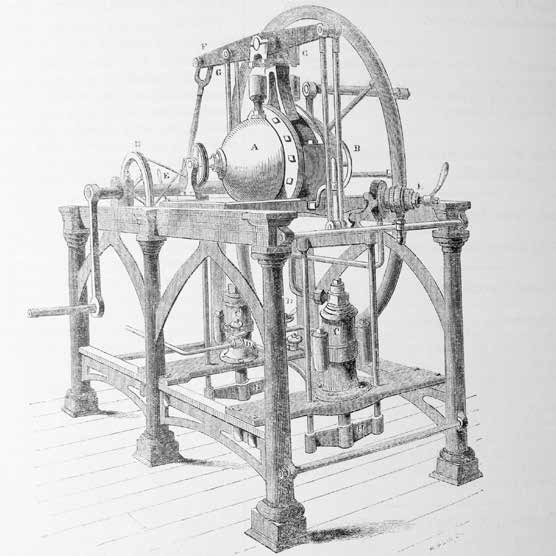
Go to the pharmacy to drink a glass of soda water
At the beginning, Americans also wanted to copy Europe's approach to imitate the production of soda water for bottling and sale, but the helpless bottle process could not keep up, and the US Congress banned the soda water imported from Europe. In 1806, Professor Benjamin Silliman, a professor at Yale University, bought equipment for soda water from Europe and moved the equipment to the pharmacist shop. It was the initial soda beverage machine. In the United States, drinking Su Dazhui has a sense of ritual going to a bar or a coffee shop.
From the middle and late 19th century to the beginning of the 20th century, the soda in the United States was only sold in pharmacies. In 1908, a pharmaceutical publication "The Pharmaceutical Era" ("Pharmaceutical Age") wrote: " Preparation of pharmaceuticals. No matter how unacceptable their original taste, customers will be a pleasant finished product at the counter. "Pharmacists add a few spoons of syrup and coconut wine to these soda water, and after stirring, pour it down, and pour it. In the Gaojia Cup, the pharmacist of the pharmacy became the first bartender. In 1875, ice cream and soda met, and snow -top beverages were sold in the pharmacy. Pharmacies selling soda beverages have received miraculous benefits in just a few years.
In the United States in the 1920s, customers were sitting in front of a long counter, and sipped the various kinds of sweet beverages and soda water prepared by the pharmacist
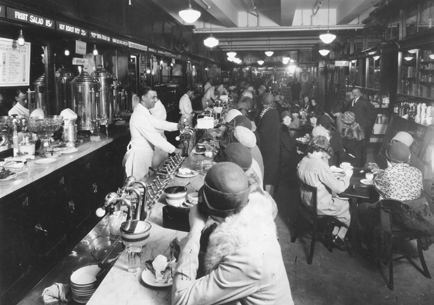
The legendary beverage Coca-Cola was also invented by the pharmacist. A small amount of Cocaine was added to the original formula. The "COCA" in the name Coca-Cola was taken from cocaine. It was not until 1903 that Coca -Cola was removed from the formula.
Coca -Cola originated from the 1886 rural doctor John Stith Pembrton inadvertently poured the syrup into soda water, and the new type of potion made. This potion was peculiar, and later was named Coca-Cola after being improved. Today's people also like to call it a happy house, because it is a combination of sugar and caffeine, which can stimulate human nerves and enhance people's pleasure. The carbonate gases in beverages will bring a refreshing pleasure.
In the era of the pharmacies selling soda, most soda water added to the soda water, which can help those housewives who are upset because of the heavier housework, the salesman who runs out of the outdoor east. The behavior was stopped by the Food and Drug Administration because of a large number of addicts. The "Pure Food and Drug Law" promulgated in 1906 has banned "ingredients" in food and drugs. However, during the US ban on the United States from 1920 to 1933, soda also became the best cover of spiritual wine. Erotic wine relied on cocktails to adjust the concentration of light wine, and then added the light taste of bubbles to successfully board the dining table of people's daily life.
"Sealing"
As we all know, the most attractive part of soda lies in its "qi". This kind of carbon dioxide inside the liquid cannot be stored for a long time, and it is easy to slip away. A bottle of soda is exposed to the air. After a few hours, it becomes flat. No strange sugar drink. Therefore, sealing for soda bottle has once become a key project for many businesses. The first Schweip -carbonated drink was installed with ceramic containers, but because the "bubbles" would be relieved from porous pottery walls, they had to use glass bottle to replace the ceramic bottle. Around 1809, William Hamilton in Dublin invented a torpedo bottle. The shape of the bottle is very unique and the base is round, so you can never stand up. If you need to display it, you must support special shelf. Why use this design? It turned out that after the bottle was put in carbonated drinks, it was necessary to use cork to plug the bottle mouth. The cork is shrinking when it is dry. If you let the bottle stand, the cork is bound to let the gas disperse due to contraction. Therefore, this bottle is inherently lying down to ensure that the cork stopping is moist and prevent running.
However, using a wooden plug blocked bottle will increase production costs, and the effect is also average, and sometimes the gas will slowly slip away. In 1870, the British Hiram Codd invented an irrigation machine to pack up a groove at the mouth of the bottle. In 1873, this sealing method was further improved, and finally used glass beads to replace wood plugs, becoming a method of carbonated drinking beverages. This kind of bottle is called Codd Bottle. There is a glass bead in the bottle. You need to fill the soda quickly and invert the bottle body. In the rubber circle of the bottle mouth, the packaging effect is achieved. This bottle of soda is called Bozi soda (marble soda). Before drinking soda, use a bottle -shaped bottle -shaped bottle -shaped bottle, and press the bead of the bottle mouth to press down. The pneuma in the Cord bottle is generally not taken out, and the empty bottle is directly recycled and reuse. In 1884, Bozi soda was brought to Japan by Scottish immigrants and reached the level of mass production. In 1953, half of Japan's carbonated beverages used this packaging, and Bozi soda often appeared in Japanese animation.
Kod bottle that appeared after 1873 can achieve a better sealing effect. Because a glass bead is placed in the bottle, this kind of soda is also called Bozi soda
However, drinking soda with Corder bottle is easy to block the bottle mouth when it is poured, which causes a straw to drink, which is very troublesome. A soda dealer in Japan improved on the basis of Kod bottle. He asked the factory to design the groove at the bottleneck, so that when pouring the bottle, the marbles would roll into this groove and get stuck, and it is difficult to block the bottle mouth. However, the pouring angle continues to increase, and the marbles will still roll out. In order to get this marbles in the Bozi soda, the Japanese who liked to invent and created were also racking their brains. They also designed a bottle, which added a circle of contraction to the bottom position, much like the foot circle of porcelain. After the bottle opens into the bottom of the bottle, the marbles will always stuck in the bottom of the bottle below the contraction circle when they are dumped, and it is difficult to roll to the bottle mouth. Later, because the children were always dangerous to collect the glass bottle in the collection of the pneuma in the bottle, the soda manufacturer changed the glass bottle to plastic.
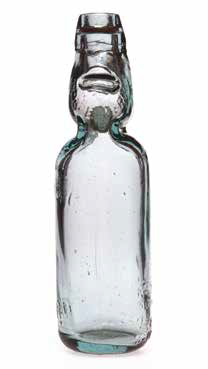
In fact, as early as 1892, Americans William Painter invented the Crown Cap. This sealing method was more economical and simple. Crown is used in bottle beverages and bottle beer worlds. Today, Bozi drinks are still sold in the Japanese market, and even the Bozi Soda Bottle Museum has appeared.
Everyone can make "Dutch Water"
The time for soda to enter China can be traced back to the late Qing Dynasty. In the Republic of China, fashionable men and women have long been accustomed to the coolness and heat of carbonated drinks. Researchers' attention to the Republic of China's diet was mostly concentrated in coffee, tea and wine, and rarely discussed soda beverages. The article "The Customs Test of the Republic of China during the Republic of China" written by Fu Lingxi introduced this field in detail. According to the "Clear Banknotes", when soda first entered China, it was called Dutch water. At least in 1887, it appeared on the streets of Shanghai. The drinks were pale green. Essence At that time, people were used to "some of the Netherlands", such as Dutch beans, Dutch pigs, and dutch downs, such as Dutch beans, Dutch pigs, etc., probably because almost all of the early Chinese products came from Dutch merchants.
However, some people also infer that Dutch water is actually just mint water with cooling and heat -relieving functions. In the late Qing Dynasty, the word soda actually had multiple meanings. "Yiwen Lu" wrote: "Flowing objects such as water slurry, rippling floating, that is, it becomes soda." The soda here refers to water steam, and a news about Americans invented the "new soda" at the time, and said It is industrial dry ice.
In 1906, the Suzhou Ruiji Soda Plant was established and became one of the earliest soda factories in China. Since the beginning of the Republic of China, various soda factories have been established one after another. There are American -funded enterprises Huai Le Shi Soda Corporation, British Charity Zhengguanghe Western Bank, French and Commercial Kangcheng Winery. Yuquan Mountain Brewery Soda Corporation, including Watsons, was originally foreign -invested and operated, which was later wholly by Chinese entrepreneurs. Watsons has an important position in the history of Chinese soda. In the 1950s, the green soda produced by Datong Food Company. Since the beginning of the Republic of China, soda factories in various places have been established one after another, including foreign brands and many ethnic enterprises
In the early years of the Republic of China, soda beverages were very popular, "no matter who did it." Around 1915, the registered trademarks of soda already had fruit soda, lemon soda, fresh orange soda and other fruit soda. In addition, there were rose dew sodas, sand showing soda, and creamy water water. According to the announcement of the Police Department announced at the time, the officially approved soda sales varieties include more than 30 flavors such as bananas, grapes, and Sydney. In 1916, in order to regulate the quality and hygiene standards of the soda industry, the China National Chamber of Commerce Federation also published the management rules of soda business management.
Chinese people with strong hands -on capabilities in their diet not only are willing to buy finished soda, but also start to think about how to make their own homemade. There are also self -made soda ingredients in the newspaper: sodium carbonate, dilute hydrochloric acid, syrup, and cool white. At the same time, the producers can add lemon syrup, banana syrup, etc. to make their own unique taste.
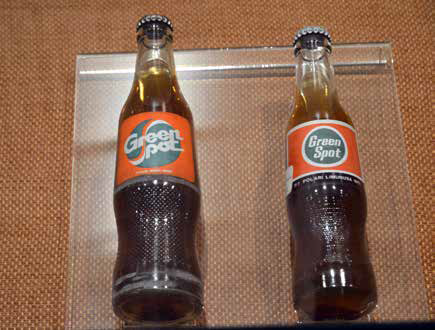
Self -made soda was common in the Republic of China, which gave birth to small merchants and hawkers selling various soda at the end of the streets. Of course, the price is much lower than that of the brand soda. Western goods, such as soda, quickly completed localized improvements in China through self -made methods. In the 1920s and 1930s, foreign brands were selling for about one yuan. Domestic brands could only sell seven or eight anise, and soda on the roadside stalls may only need to be three or four corners. Zhou Zuoren has been in this roadside stall soda in "People who sell soda". When wholesalers come, they only need one dollar to sell them in many places like Xishan. When there are many tourists, they can earn ten yuan a day to earn ten yuan profit.
Many soda merchants use high -tech machines, distillation technology, strong light irradiation and disinfection during the production process.
There are more people selling homemade soda, and lack of market specifications. Some people who are desperate uses mint lobes instead of mint oil. The water is not hygienic. Consumers often have diarrhea after drinking. Ask the child not to buy it.
At the end of the 1920s, China's soda industry had to accept a super competitor -the American Coca -Cola Company began to deploy the Chinese market in a franchise model. Shanghai Watsons, Qingdao Kangle Soda Plant, etc. began to import concentrated liquids and machines from Coca -Cola Company in the United States, and distributed in bottles in China. However, when you first arrived, the "catfish" that once called the wind and rain in the US market did not stir very much water flowers. The reason is that the taste of Coca -Cola is sweet and bitter, and it is a bit strange. In the instinct of Chinese consumers, several special bottle factories are operated by losing money.
Faced with this situation, Coca -Cola has begun to promote its worldwide recognition and high -end positioning. The advertisements they published in the "Declaration" continued to emphasize that they were "popular in the world" and "global" and "unhappy drinking", and waited for Coca -Cola with the exquisite and elegant material life of the West. In the advertisement pictures, the Chinese men who are in the elegant West Restaurant and wearing robes and horse gowns are drinking. This is unique in China, which is full of beautiful advertising blockbusters. By the 1940s, Coca -Cola's advertisement in China began to highlight the chic and fashion of American life.
Since entering the Chinese market, Coca -Cola's pricing has always been higher among similar products. In the 1940s, a bottle of Coca -Cola was equivalent to a bowl of beef noodles. Its bottle company often organized people from all walks of life to visit for free in order to show their production technology strict health standards to consumers. This was undoubtedly a bold propaganda method at that time. From time to time, there are social news such as "a banquet consumption of Coca -Cola once at a time". Coca -Cola gradually stood out in the soda market with luxury high -end brand image. In 1947, there was a delicious sales machine in Shanghai, and a copper coin was put on the machine. Coca -Cola will automatically fall from the machine. In 1948, the sales of Coca -Cola alone in Shanghai had reached one million boxes.
In 1928, the Coca -Cola sales pavilion in the Shanghai Sai Dog Club. The sweet taste of Coca -Cola was not accepted by Chinese consumers at first. It immediately changed its marketing strategy to promote its worldwide recognition and high -end positioning.
Soda drinks are so popular. Is there any special drinking place? There are really. During the Republic of China, the Shanghai cafe and tea restaurants were lined up in a row. These places consumed the high environment and elegant, which belonged to a wealthy class or a person with a certain social status. The most popular place for young people was the ice room that can drink soda. In the 1940s, the five steps and a pavilion in the five steps of the drinking room in Shanghai were open until late at night. The newspaper uses photos of drinking soda to reflect people's leisure life, saying that "the rich people sit in the tea room all day, soda, Coca -Cola, and fresh orange juice, but it is a wonderful product."
Interestingly, in addition to humans, other animals are not interested in bubble water. The taste of carbon dioxide dissolved in water is salty and irritating. It does not discuss them.Essence(Reference information: "Modern Imagination and Turkish Debate: During the Republic of China Soda Customs Test", "The story of soda, from the pharmacies more than a hundred years ago," "Simple Bodhisattva History", "The Bozi Soda in the cartoon" is the summer."Taste", "Previous Legend of Carbonated Beverage", etc.)
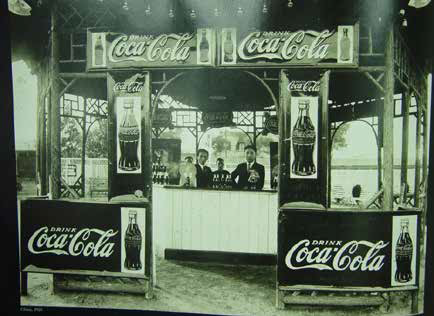
- END -
Red Bloodline -Today in the History of the Party History and Army | July 3rd Guangzhou Farmers Movement Specialty Center

"Data-version =" 0 "data-vwidth =" 1280 "data-vHeight =" 720 "transcoding =...
Organize a beauty design vocational skills competition
Putian.com Recently, the Human Resources and Social Security Bureau and the District Women's Federation of the Chengxiang District jointly held the 2022 Putian Artisan Beauty Design Vocational Skill...